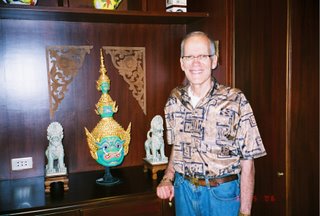Exhibition Designing a Happy Journey
Thailand Creative and Design Center. The Emporium. Bangkok, Thailand. May 19, 2013. In 1987, Japan privatized its government-owned rail transportation system. One of the resulting private companies is the Kyushu Railway Company (JR Kyushu), which operates throughout Japan's second largest island of
Kyushu, an island I visited some 45 years ago. I remember it as a beautiful rural island, which I approached by boat after a sublime trip on the Inland Sea. The purpose of this exhibit was to show how, over the last 25 years, JR Kyushu's hiring of designer Eiji Mitooka, has resulted in the origination and execution of designs which integrate local materials, arts, nature and regional history into the rail journey, especially in the design of about 30 trains. The objective, according to JR Kyushu, is that just riding the train itself becomes the main purpose of the journey. Judging by the photos in the exhibit, I think that JR Kyushu has succeeded admirably. My wish is that those in charge of America's airlines would do the same.


































